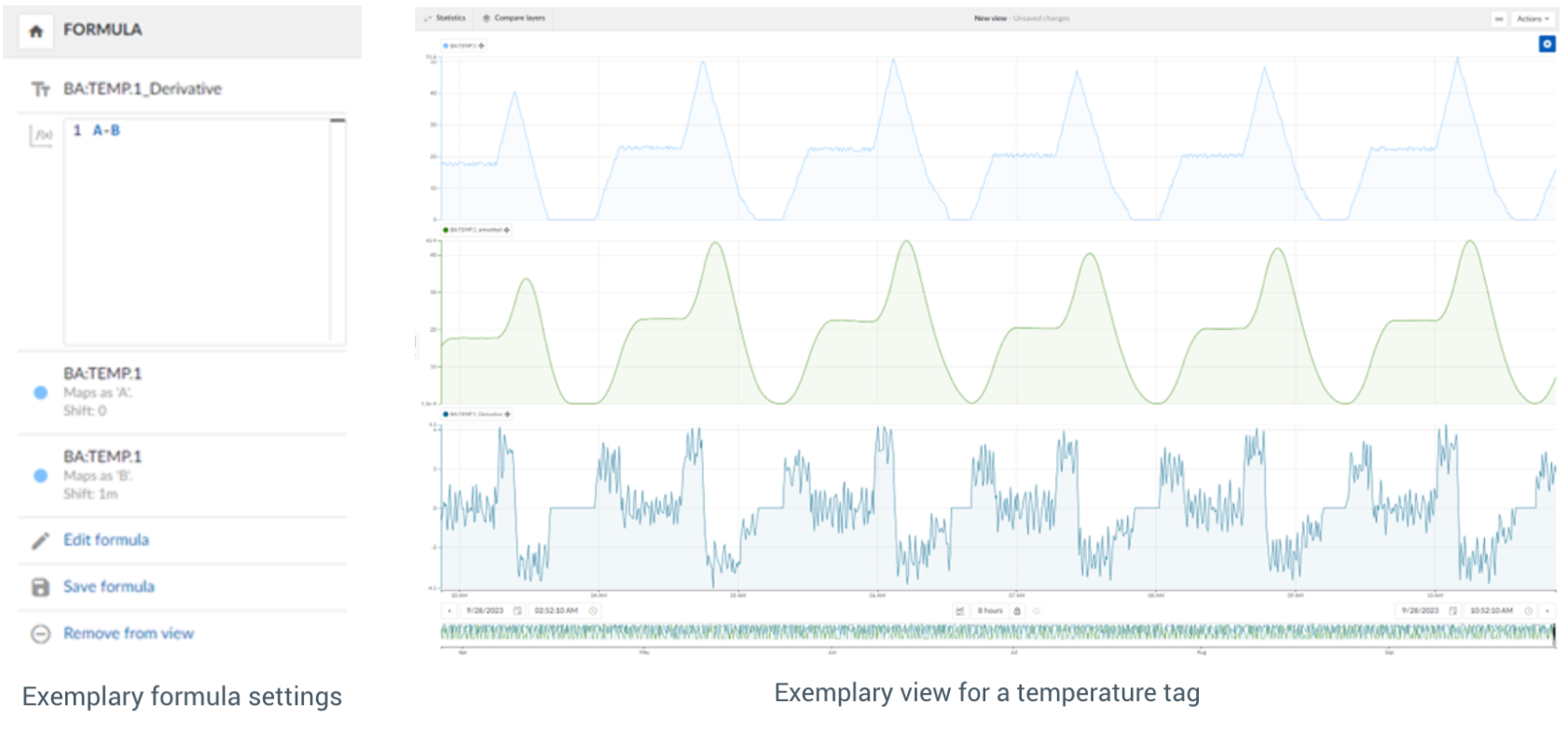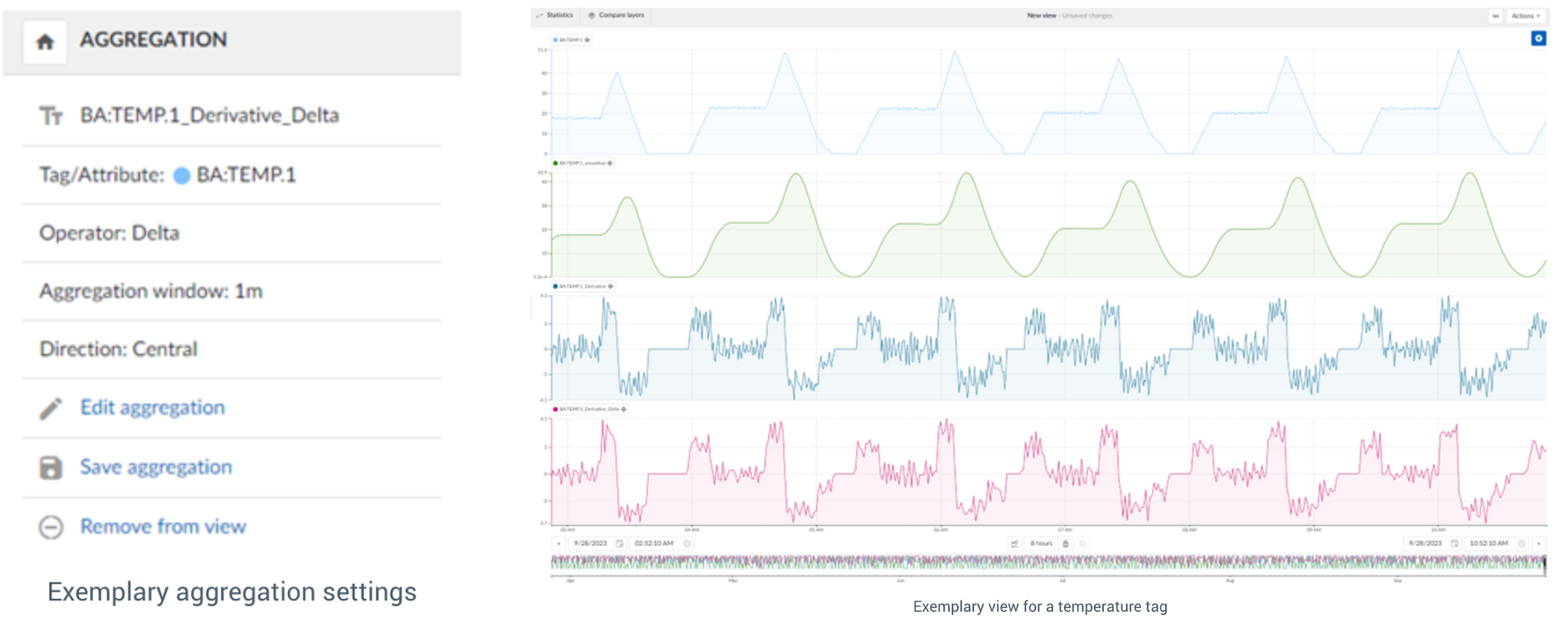Hello 🖐🏻
Identifying periods where parameter readings increase or decrease is crucial for process monitoring!
🤔Why it matters? Changes often indicate potential issues or opportunities for optimization.
✍How to analyze? Calculating the derivative of a tag allows for a more precise assessment of how sensitive a process is to fluctuations in specific parameters.
📊 In TrendMiner : Different methods are available to determine the derivative based on the type of analysis needed.
👉🏻 Preparation: Smoothing Signals
For noisy or highly fluctuating signals, it is recommended to perform an aggregation before calculating the derivative.
This helps achieve a more accurate approximation of the derivative of the selected function.
Recommended Aggregation:
- Tag: The tag for which the derivative should be calculated
- Operator: Average
- Direction: e.g., Backward
- Aggregation interval: e.g., 10 minutes

👉🏻 Option A: Calculating the Derivative Using a Formula
The derivative can be determined by calculating the slope of a tag over a short period. This is done by subtracting a time-shifted version of the tag from itself. The shorter the time interval, the more accurate the approximation of the actual derivative.
Formula:
A - B
Variable Mapping:
- A = (Smoothed) tag for which the derivative should be calculated
- B = (Smoothed) tag for which the derivative should be calculated, shifted by e.g., 1 minute

Advantages of the Formula-Based Derivative:
- High accuracy for short time intervals (delta_t < 2x index resolution)
- Ideal for long-term trends, such as fouling detection, when delta_t > 24 hours
- Enables unit calculations within the formula
- Simplifies nested formulas by counting as just one level when calculating slopes
👉🏻 Option B: Calculating the Derivative Using Aggregation
An alternative approach is to use delta aggregation, which simplifies the derivative calculation over defined time intervals.
Recommended Aggregation:
- Tag: (Smoothed) tag for which the derivative should be calculated
- Operator: Delta
- Direction: e.g., Central
- Aggregation interval: e.g., 1 minute

Advantages of the Delta Aggregation Derivative:
- It is particularly useful for general trend analysis and process monitoring with stable signals
👉🏻 Conclusion
Calculating the derivative of a tag in TrendMiner can help detect process changes early. The choice of method depends on the specific analysis requirements.
- Formula-based method is ideal for high-precision calculations
- Delta aggregation offers a quick and straightforward alternative.
Have you used derivative calculations in TrendMiner? Which method do you prefer and why? Let us know in the comments! 🚀


